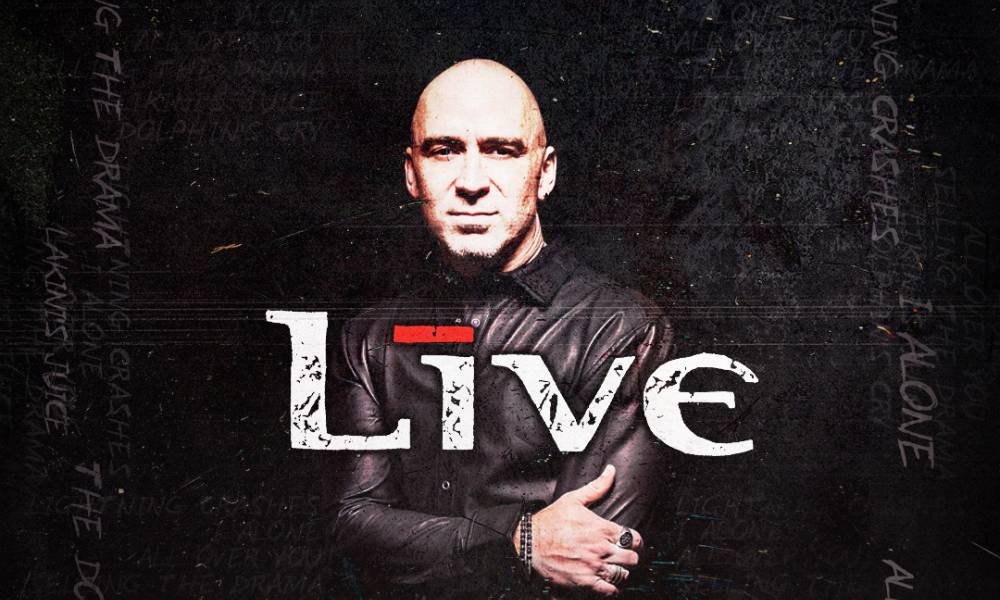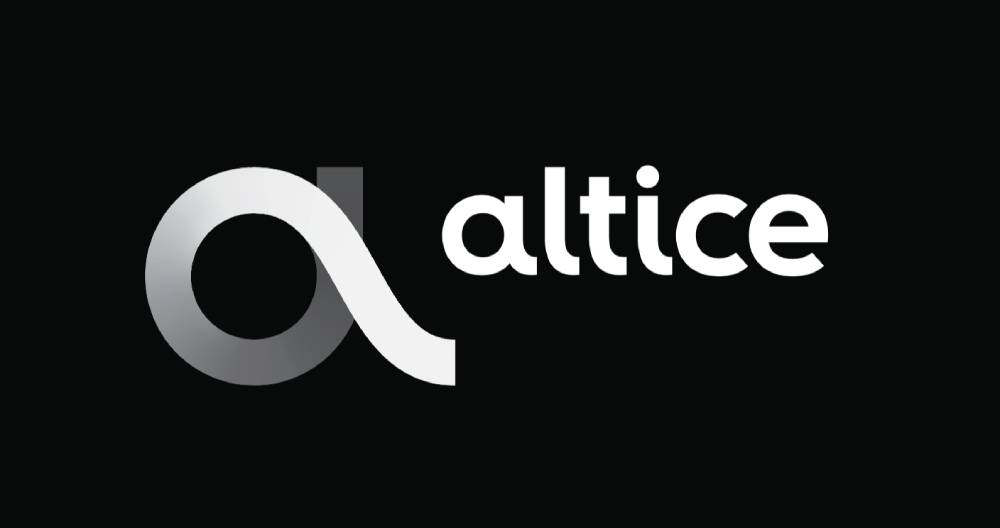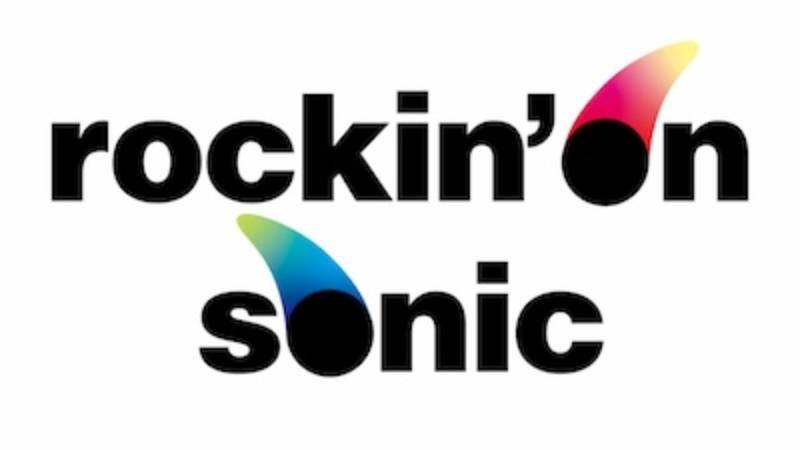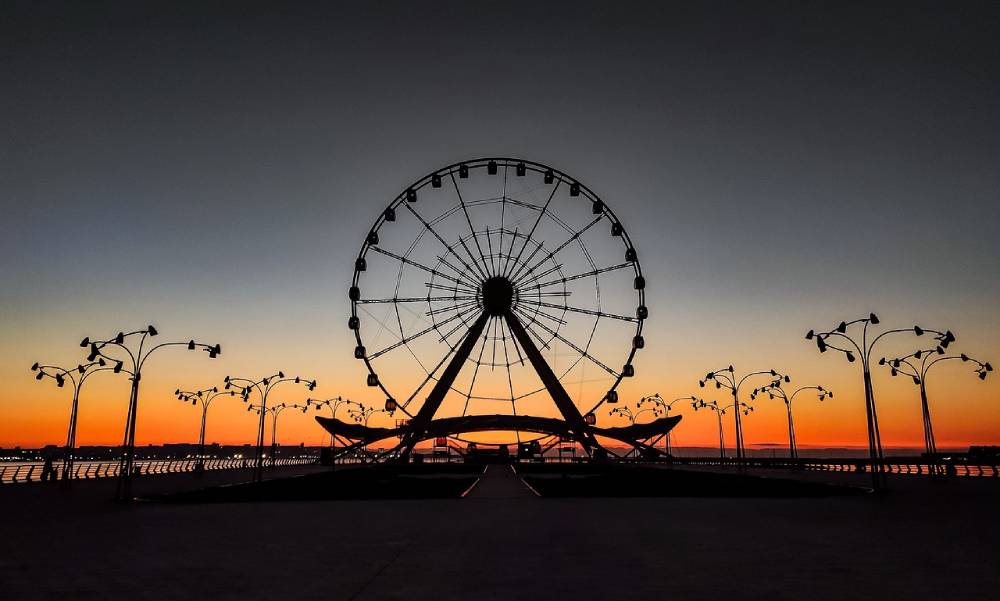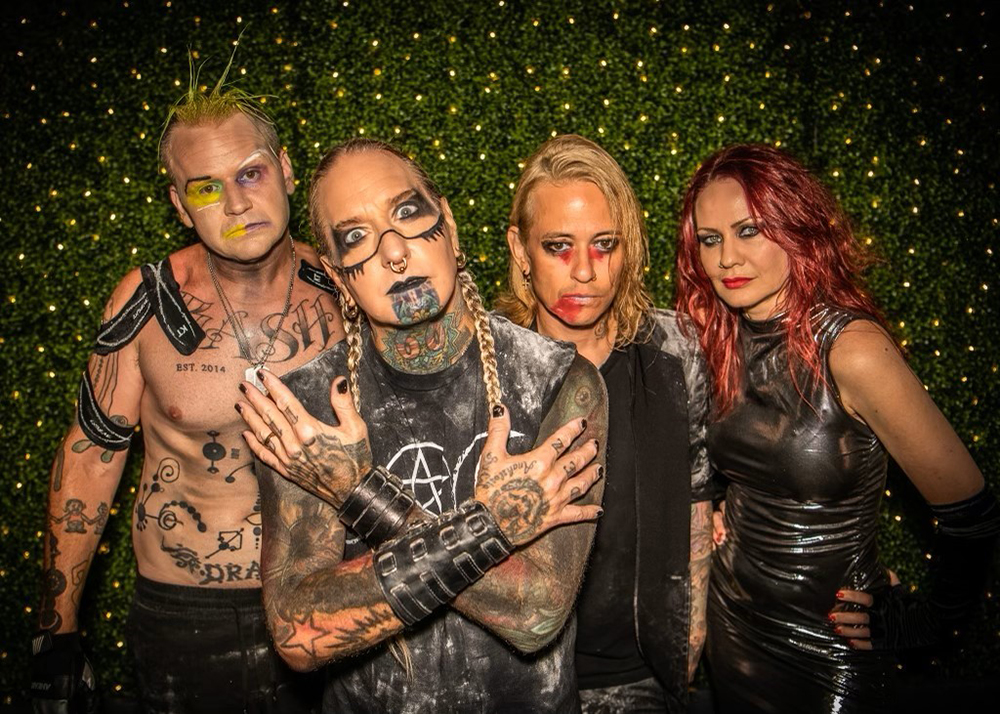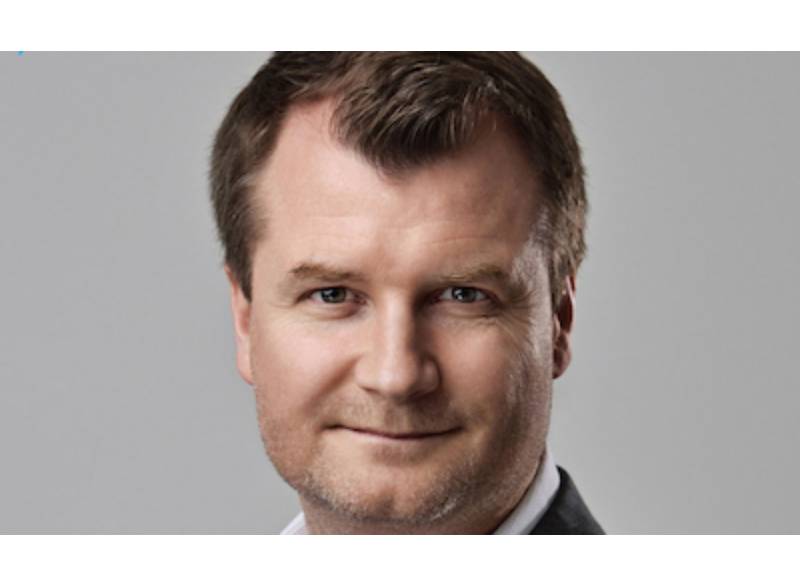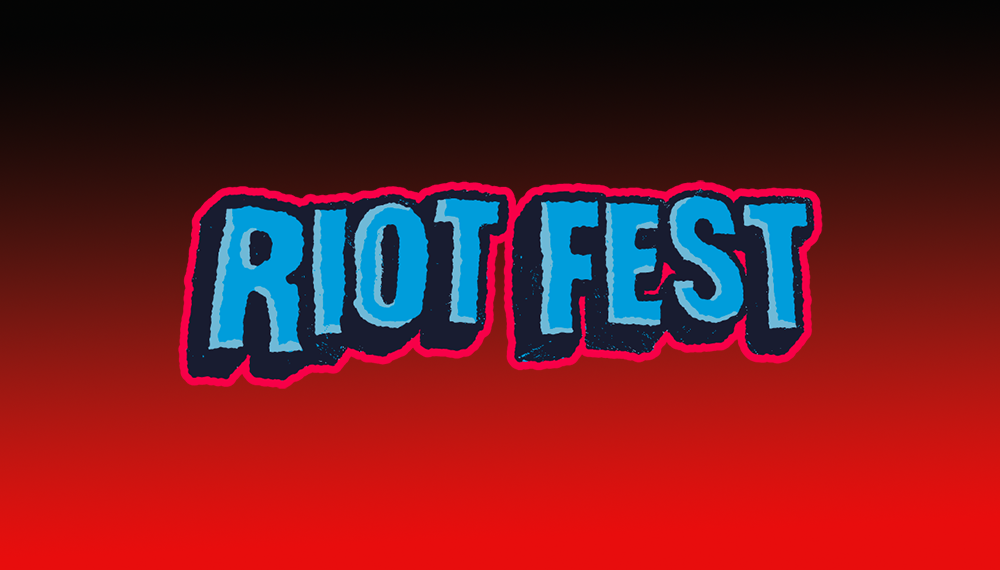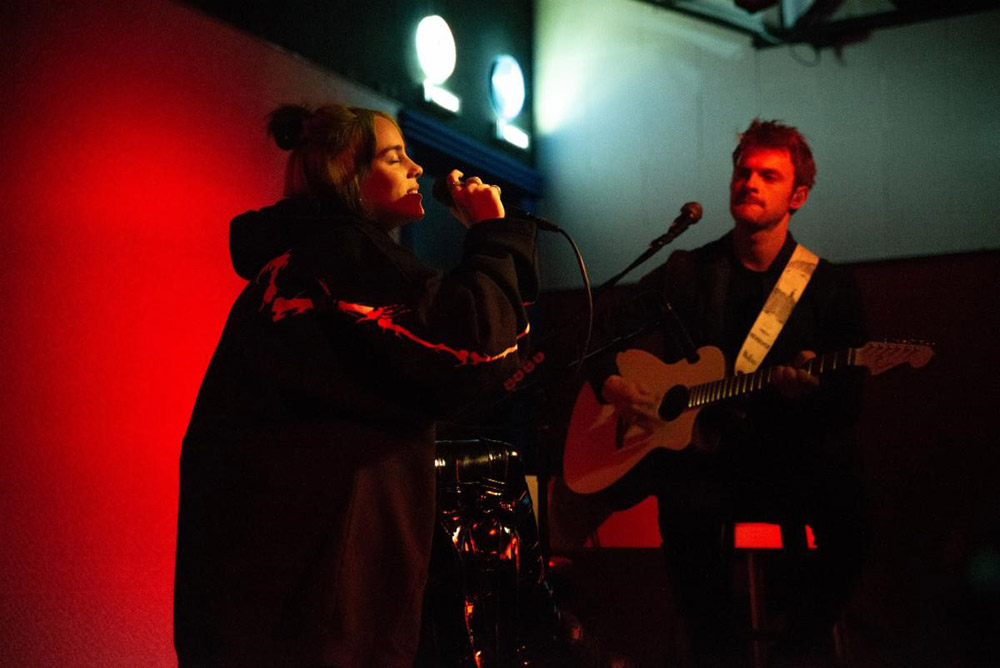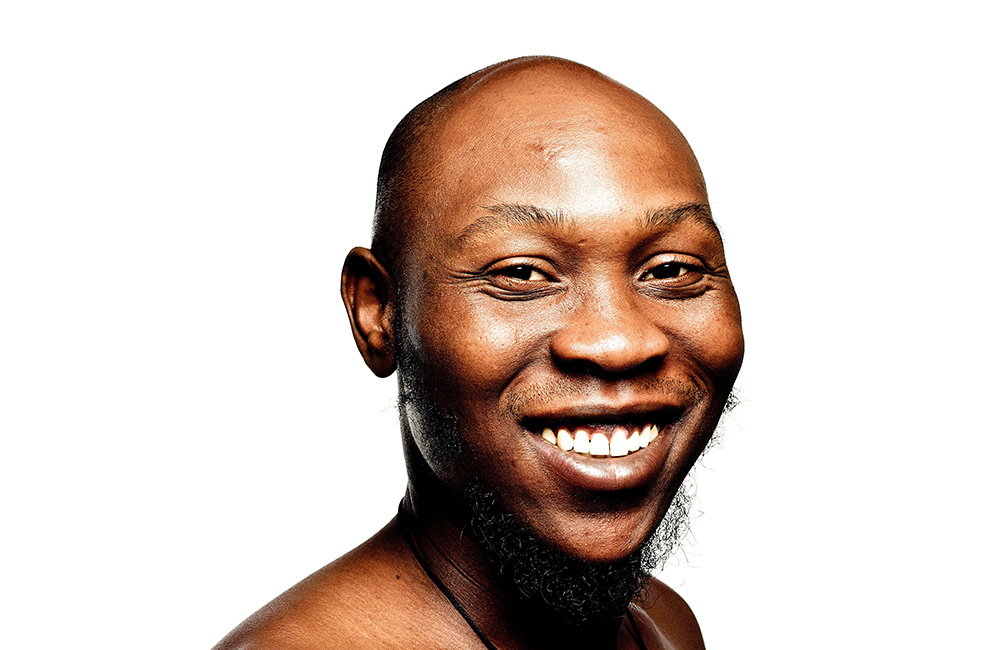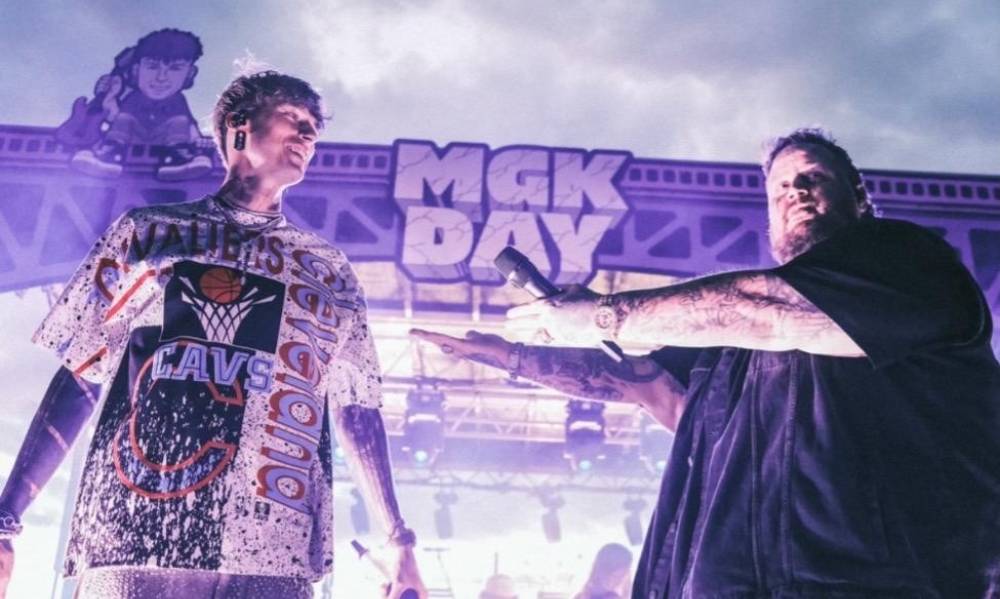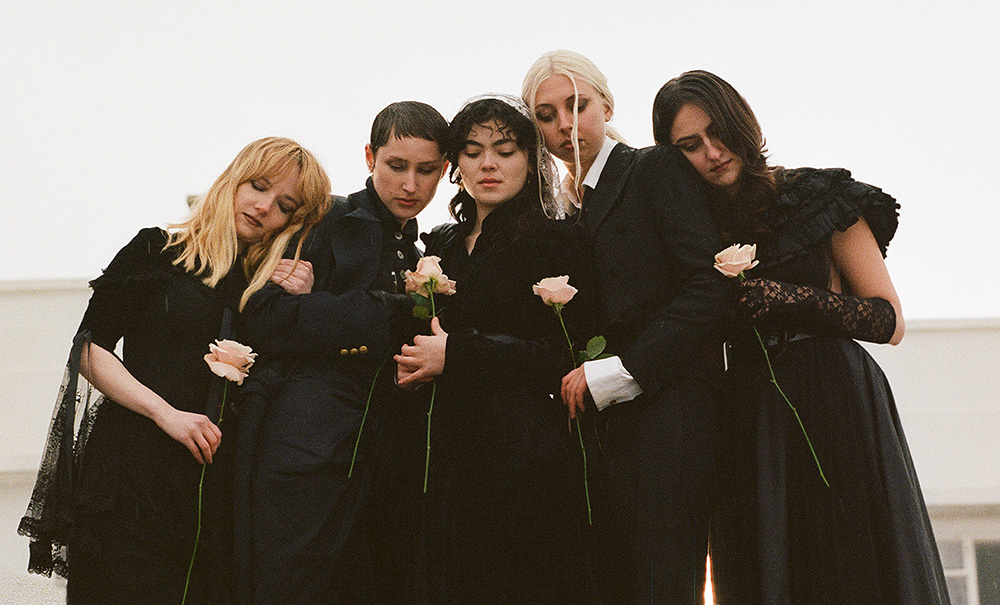This week In the Hot Seat with Larry LeBlanc: Nick Whitehouse, Co-Founder & CEO, Fireplay.
A tad under the live music industry radar throughout 2017, Fireplay–a new full-service, multi-disciplinary creative and design studio—will be hitting on all cylinders this year.
Fireplay, comprised of 7 partners with specific, fine-tuned skills–lighting, architecture, pyro, lasers, production, marketing, and accounting— will be out on the road providing staging set-ups for Justin Timberlake, Brett Eldridge, and the Killers.
More Fireplay-affiliated tours will almost certainly be announced in coming months.
Each Fireplay partner has decades of experience as freelancers in their individual fields. Last year, they decided to team up together and offer all of their services under a single company shingle.
Several of the Fireplay partners, Nick Whitehouse, Steve Dixon, and Kelly Sticksel, are notable for bringing to life shows in recent years for such artists as Jay-Z, Kanye West, Beyoncé, Britney Spears, Jack White, Coldplay, Rihanna, Alicia Keys, Thomas Rhett, James Taylor, Prince, and others.
Though lighting designer Whitehouse, the co-founder & CEO, works from his home in Vermont, Fireplay recently opened offices in Brooklyn and Los Angeles.
Since leaving his UK hometown of Leeds in the late 90s, Whitehouse has had a remarkable career run.
Mentored by famed UK lighting designer Bryan Leitch, Whitehouse first worked with Starsailor. His first long-term client was Coldplay who took him around the world several times, and which led to him being spotted in Japan by Justin Timberlake with whom he has worked closely with since as well as being on the flight deck for tours with Kylie Minogue, Jack White, Kanye West, Jay-Z, and others.
So three years after the conclusion of the two-year long “20/20 Experience World Tour” Justin Timberlake is going out on tour this year.
It seems like he is.
[Justin Timberlake announced January 8th, 2018 his The Man Of The Woods Tour. Produced by Live Nation Global Touring, Wright Entertainment Group, LBI Entertainment & Tennman Touring, the North American outing will kick off March 13th in Toronto and stop in 27 cities, ending in his hometown of Memphis on May 30th. Timberlake had released a visual teaser of his album “Man Of The Woods,” slated to be released Feb. 2nd, two days before his Super Bowl halftime performance at the U.S. Bank Stadium in Minneapolis. Ticketmaster reportedly had posted a seating map for a March 13th Timberlake show at Toronto’s Air Canada Centre and then removed it. The tour follows the trend of other artists who have used a Super Bowl halftime performance to promote their tours. It makes sense given the platform of the world’s largest television-viewing audience. Beyoncé released “Formation” shortly before her halftime show in 2016, and Lady Gaga released her album “Joanne” shortly before the game last year.]
You have done several major tours with Justin?
Two major tours. We started with “FutureSex” in 2006, and then we did “The 20/20 Experience.”
On Justin’s tours, you met his tour director Steve Dixon, then president of Roadwerx. Did seeing him work provide you with a more complete understanding of a producer’s role in the touring space? You hadn’t previously wanted to be a producer but he told you that you were already, in effect, acting as a producer.
Exactly. I have a lot of respect for Steve, and what he taught me. Steve is now part of Fireplay.
Fireplay started with three partners including him?
Yes. The other was Kelly Sticksel (then chief development officer for Pyrotecnico FX). Kelly came from a special effects background. I was trying to find the right people to try and partner with. He’s been in the business for a long time. Been there and done it all for a very long time. I met him when we did 20/20 for Justin. I was trying to do this laser gag. I probably went to 15 companies, and they all told me that it was impossible. I met Kelly, and he showed me exactly what I wanted. I said, “Can we do it?” He said, “Yes. We can make it work.” And he made it work. Six months later, I found out that he had petitioned the government to change the law of lasers so we could do the trick with the laser the way we wanted to.
There was also Max Duval. He comes from a traditional marketing background. I said if we are going to do this (Fireplay) we have to have the right imaging in the marketplace.
Was Fireplay launched because of people working together on multiple projects, and that you each recognized a synergy?
Yes, that’s the basis of it really. We started and then added Josh Zangen the production designer that I’ve worked with on the majority of the big shows. The last Justin show. The Kylie Minogue show. We added him to the mix.
How many partners now in Fireplay?
Seven partners. We also have two employees that work in the office and two that work on the road.
Have the partners retained their home bases or are you now working from Fireplay offices?
We started without an office. That works for people like me who can be on the phone and are, obviously, traveling all of the time. But for the designers we have, we wanted to put in an outlier. We originally looked only in L.A. We were about to sign a lease for a nice office in L.A. But for the first six months in 2017, when we were taking meetings and doing interviews, we didn’t do one of them in L.A. So we revisited that. Maybe the industry is changing. All of our meetings were either in Nashville or New York. That’s where it seems the music industry is shifting. We work in L.A. still, obviously.
Do you not need a big open space for figuring out staging?
No, we can just rent. We go to rehearsals wherever they (artists) are working from. We moved into Josh’s offices in New York for the first year until we found we had to expand. We’ve just signed for a space in Brooklyn and, hopefully, that will be our home base for the next four or five years.
Like the Stonehenge set designer in “This is Spinal Tap,” the 1984 rock music mockumentary, you design staging for tours?
We are those guys. We do all of the designs. We come with the ideas, the prop ideas, the special effects ideas. It is really interesting that it has worked out how it has. What we were trying to do in 2017 was to be under the radar and build Fireplay so we could say this is what we’ve done; this is who we are, and this is what it is. Just as soon as people started getting word of it, we started getting busy. I’m really thankful that it has worked as well as it has. We are just growing as much as we can at the moment.
Over the course of your career, coming up through the UK clubs to working major shows globally, you have held numerous positions including as stage manager, production manager, lighting director and so on. Has that well-rounded experience provided you with the ability to cope in all of the touring sectors today?
Yeah, completely because you understand everybody’s point of view. You don’t have to go back and argue with somebody because you do understand why they are saying what they are saying. If someone says “We have to cut a truck,” some lighting designer might say, “No, this is my design; this is my art.” But if the manager says that he needs one less truck for the budget, you get everything about that.
Experienced first-tier specialists reach a point that when they walk into a room everybody is working on the same high level as they are. Have you reached that level yet in your career where you know you are working with the pros?
Absolutely, and it very different walking into one of those rooms with someone who doesn’t quite understand where they are at. It’s always a lot longer process. As you said, you can walk into some rooms, and you can tell everybody is a complete pro who knows what they are talking about, and knows what they should be involved in, and what they shouldn’t be involved in, and knows what they should stay out of. You walk in and out of one of those rooms, and it’s, “Okay, cool, we’ve got this. We understand what we are doing. Everybody is a pro. We will make it work.”
On tour, segments of the road crews tend to protect their turfs, especially when it comes to budgets. Sound and lighting personnel often do not get on. People do protect their turfs still?
They do. I try to make everybody happy so I have a good relationship with the sound guys; especially with the size of the shows that we do these days we have to because the PA has to fit in the right place visually as well as audio wise. At the end of the day, we do have to remember that we are doing a show, and the show is all about the music. If the music isn’t any good then it doesn’t matter what the visuals are. People are going to complain that they can’t hear the songs that they like.
What touring values did you specifically learn from working with Steve Dixon?
Specifically, what I learned from Steve was the way that he was doing business. The first time I really met him was on JT (Justin Timberlake), and then we really got to know each other when we worked Britney (Spears) together. He has seen the changes in the industry and seen them a long time before anybody else understood what they meant. He was pushing this new model that was all about getting the artist a bigger return and making sure they (tours) were profitable.
In what way?
Instead of like a lot of other people, he was saying, “Yes we need to have money to make this happen, but every dollar that we spend should be on the stage. Let’s not spend one million dollars backstage that nobody cares about. Let’s spend it all on the stage so the show can be the best that it can be.” He’s again one of those people (a pro). He’s also a musician. It’s his passion. He loves touring. He loves to make these shows amazing.
His thing was, “How do we do it, and how do these guys (artists) make money now? How do we do the best show that we possibly can, and how do we cut the right corners? Not just cut all of the corners. We still want it to be the most amazing show that can possibly be, but how do we now make this work financially, and how can we make it tour successfully?” He’s got a brilliant mind like that. I learned a lot from him, but I could never replace what he does. He’s obviously the guy who gets it, and he has all this wealth of experience that has led him to know what to do, and when to do it. Seeing what he did out there made me completely change my thinking. Just not saying, “Okay I’m a designer. This is what I want. It’s all about the art.” It was more, “It’s all about the art and economics.” That’s kind of what I took away from Steve.
Touring has greatly evolved from when you entered the business. At one time touring was intended to promote an album within a defined, if not restrictive, budget. Touring is now more selling tickets and providing entertainment. The music video era of the ‘80s largely transformed the live performance to being more theatrical. Today, it’s been transformed into full-scale productions even for lesser acts.
It has, yeah. And you are right. When I started I’m not even sure that there were budgets. It was, “How do we make a show that is really cool so they (fans) will buy the album?” It was literally about selling those albums and getting to #1 on the radio charts. All of that. That was what the tour was there to promote. Now, as you said, it’s a business. I think that I’ve heard the number of 80% to 85% of all their (artists’) money comes from selling tickets, and from how well they do on the road.
Utilizing advanced technology in order to personalize the audience experience was the game changer.
Yeah, and I think that really comes from trying to sell tickets. It’s, “How do we make our show better than everybody else’s?” and “How do we give them (fans) an experience that they can’t get just by watching this on YouTube?” I hear that a lot from the people that we work with. “How do we give the fans an experience that they will come back; that they will take away from the live show other than playing our album live at the end with a stage, and having a few lights around us? How do we give them something really special that they can experience?”
And I think that’s where you said the video age and all of the technology, that’s where it all comes in, is that we are trying to do things other people haven’t done. We are trying to push the boundaries of what can be seen in a show. Like really bringing almost the theatrical elements of Broadway shows in. It’s like, “How did they do that? What have they done?” Bring that into a comfortable environment that doesn’t overpower the artist, but it highlights them. The big challenge that we have these days is how do you do something really cool without it being all about the technology, and not about the artist?
With so much technology, with programmable cues, and even pre-recorded vocals, there’s the danger of a show being gimmicky.
You have to be careful of that. You have to make sure that it’s live, and that it maintains that live quality. That is what is important about the live show. Otherwise, you can just watch it on the DVD.
Overproduction remains an issue with some artists.
That’s a really good point. One of the things that we always try to make sure is, at least in our shows, that there’s a place where the band can break away, and it’s (the show is) not scripted. With pretty well with every show we’ve done over the last few years, that’s been the case. Yeah, you go back and watch a show that’s so tight that you can’t change anything, it doesn’t benefit anyone. Everybody gets bored. The band gets bored. The audience sees it, and says, “That’s almost identical to the last time.”
For the Rolling Stones’ American arena tour of 1972, their tour manager Peter Rudge may have created the modern-day tour template by integrating Ice Follies and Disney On Ice union personnel with the Stones’ roadies. Since that time live music shows have become like space races. There’s considerable competition to be bigger and even more theatrical.
Oh yes, there is. The trend of the past few years has been, especially with lights, has been how many light beams can you get? “They had this many. How many can we get?” I try not to compete in the space race, like you say, to build bigger and better. It’s more, “How do we do something different.? We’ll change it in a different way.” It’s pretty hard to do that because we are in an age where onstage a lot of things have been done. When you come up with an idea, you will find that someone has already tried to do it. But how do you something that is a little bit different, and how do you do something that, maybe, has been done before, and do it in a different way?
At the same time, the show revolves around the artist or the band.
It does. Some performers are way better than others when you put them in front of an audience. Some develop over awhile. I have always said that if you put someone onstage who is incredible, like Leonard Cohen, for example, he needed nothing. He could have just sat onstage. I was out with James Taylor last year, and the fact that there was any production behind him at all was interesting. We were like, “Let’s not do any big and flashy. Let’s tell his life story because he is 70 this year.” He wanted to do something a little bit different. He wanted to expand on what he had done before. It was still like, “The fans. It’s all about them. It’s all about the music. All we can do in this show is to enhance what you (James) are doing in the front of the stage, and give you some really nice things to play with.” I think that sort of sums it up.
Then we’ll do some pop star who has just won “American Idol” and you have to do this massive show around them because they can’t handle entertaining the crowd on their own. They are good for a few songs, and then you know they don’t have that star quality that people have built up over the years from playing clubs and bars and theatres and amphitheaters all of the way to the stadium, so they know how to deal with it (being on stage for an entire show).
Designing and creatively producing James Taylor’s eight-week tour of arenas and ballparks last year, you worked with Amy Tinkham, the renowned director, producer, and writer of theater, dance, film, television, video, and art installations.
Yes, absolutely. We brought Amy in for that. James approached me because I had done him probably 10 years before. His traditional lighting designer Bryan Leitch I know really well. We have worked together for a long time.
Bryan Leitch has been a lighting designer for over three decades. In early 2000, he got you your first lighting director job with the post-Britpop band Starsailor.
Bryan was my mentor for many years, and we sort of built this thing up. He retired from doing the U.S. touring so James reached out to me and said, “I’d like to continue. Can you help me? This is what I want to do.” My first thought was we needed someone to tell his story. So we approached Amy, and said, “Would you like to partner with us here and help tell this James Taylor story?” She did an incredible job.
After you are approached by a client to design all of the elements of staging for their tour do you first work with drawings and then move on to work with Vector Spotlight art software to eventually build a 3D module for them to view?
Yes. Essentially, that’s it. I don’t like the fact that one of the trends recently is, “We are doing a tour, here’s a whole bunch of ideas.” For me, that doesn’t make it very personable. The light experience should be an extension of the artist’s music. So if somebody contacts me and asks how do we work together, it’s like, “Well, let’s get into a room. Let’s talk about your wishes. Let’s talk about your album. Let’s talk about your music, what you want to communicate from this tour, and we’ll go from there.” We mostly find that out from a two to three-hour meeting where we can sit down in person, and just go through their wishes, and what they really want to see. Then we can go away, pull out references, do the Vector exploring, and come up with a 3D module with a whole bunch of reference pictures. Put together a really nice package, and then present it saying, “This is what we think.” And take it from there.
Are managers and artists, in general, more savvy about this aspect of live shows than they used to be?
Some are, and some just don’t care. The ones that are really savvy about what they are doing are the ones that generally are successful in everything that they are doing because they pay attention, and it’s their life. The ones that are, “Hey, I’m going to go out and tour, come up with some really cool ideas that nobody has seen, just put them behind me, and we’ll make it work”….you try and engage them, try to guess what they feel, and you just run with them the way they are. A lot of new managers don’t really understand the business as well as the others once did.
The top level of music managers are pretty savvy.
They are pretty savvy. It depends. Some we work with are incredible. Some just want to be in the way and have things funneled through them, but the majority of these people understand where the industry is at right now, and they understand what these people on our team have done. We are fortunate that all our managers are fantastic. The better managers, and the great people we work with are the kind of people who put us in the room with the artist and say, “Tell me what I need to do to make it happen.” They will have really constructive ideas, and feedback. “Do this, and this. This is what he wants, and this is fine.” Most of the time, a really great manager is the person who facilitates a meeting with an artist. “Get in a room with them. Talk about what they want, and tell me any problems. Tell me where we aren’t going to hit the budget with their ideas. We’ll put it together, and figure it out.”
At an early meeting will you be given a budget or are you expected to work out a budget afterward?
So the pros will give me a budget. They will say, “This is what we have per week. This is what we have upfront. Design something that fits in that.” The people that aren’t pros will say, “Money is no object. Come up with the best thing that you can design.” We do, and it’s always too expensive.
Then these same people start nickel and diming back and forth.
Right. It’s like, “If you had told us that number at the start we wouldn’t have presented your artist with something that he really loves, and we really love, but now we can’t afford.”
You are also determining how long you will out on the road. If you are doing 30-day American tour, that’s one level. To do a global tour, it’d be far different. Would you take the staging designed for a North American tour overseas?
Yes. The staging would because most of that is custom. Lighting, sound, and video we would try to pick up locally, and we will mimic the same rig to save the shipping costs. A lot of the stuff we do these days we design for shipping instruments and projectors that everybody has all over the world. This is the age of everything being custom. The idea of, “I have this very light rig, and we have to take it everywhere,” that’s has gone away. You can get an MA2 (MA Lighting grandMA2 desk) in probably every country in the world today. You turn up with your USB stick, and you have your show.
You also design and personally program your own lighting.
I pretty well much program everything, yep. I just can’t get away from that especially with the higher end clients that I have. They really like and enjoy that. That is one reason that I have someone like Justin who we have an unspoken language between us now. He knows that I will program what he wants without having to sit there and go through everything with me. Many people use programmers, but I find that by the time I have told somebody what I want, I could have just as easily programmed it myself.
How have you come to determine that the best spots are VL3000s in the back wall and floor, and VL3015s in the air?
Research, and now I am in a position where they (manufactures) come to me and say, “We have this cool new light. Will you feature it on a tour?” I have a reputation in the industry where they know I will say, “This is what I’m used to. If you are happy to put it up against what I’m used to then I will consider it.” But the other side of me is thinking, “If anyone can buy this (lighting set-up) it’s a couple of million dollars to put on tour. Is it really worth a couple million dollars more than what I have already that I can rent for cheap?”
Plus you have to consider how that system would ship and travel.
Oh yes. How does it work? What does it give me that the other lights don’t? I don’t want it to break all of the time. I have been there. I have taken lights that have broken all of the time.
Justin Timberlake saw a Coldplay show in Tokyo which led to him hiring you?
He did.
You went from working with Coldplay to Justin. Did that present a bigger canvas for you to work on?
Yeah. It was a completely different world. It was really exciting and really scary at the same time. He’s like, “Here’s what I’m thinking of the stage. What do you think? Here’s what I’m thinking of the lighting. What do you think?” I was like, “I think it’s good. What do you want me to do?” And he was like, “Whatever you want.”
Justin would have staging ideas after decades being onstage.
Yes, he has some great ideas. He’ll come in overnight, and he’ll watch the programming, and then offer comments and feedback. He’s right there. He’s a very involved individual, and his ideas are always cool.
What’s the end game he’s seeking with his staging? Obviously, to look good onstage, and to have the show flow without a hitch. Interestingly, when he finished the “The 20/20 Experience” album, he told you that when he was in the studio recording he was thinking of you. He reportedly said, “We called this ‘20/20,’ because it is music you can visualize.”
Yes. And that’s the end goal. That’s why he liked what I did on Coldplay because I was hitting the beats. I was hitting the music. The lighting, for me, felt like it was another member of the band. When it was soft, the lighting was soft. When it was big, the lighting was big. He said it had musicality to it, and that’s what he liked about what I did, and that’s what we continue to do. That’s his thing.
Does Kanye West not also get heavily immersed in planning his staging? Is he very hands on?
Totally. He knows what he wants. He has a very specific vision, and that is what he wants.
In 2011, you worked on Kylie Minogue’s “Aphrodite: Les Folies Tour” which earned over $60 million from 76 shows. An eye-candy type of show production?
It was. Kylie was all about the theatricals, the performance, the massive props, the big moments, and the huge water show (that featured water jets created by The Fountain People, known for their work with the Disneyland Resort World of Color) That was the one that really stood out. Hundreds of thousands of gallons of water around the world. It was about the spectacle. It was an incredible show. I don’t think that I will ever see anything like that again. It was fun to do.
In contrast, how about Jack White’s North American tour in support of his 2014 album, Lazaretto?” With no video, no moving light chases, no sweeps, the focus was really on Jack and his band.
Well, that was interesting That was completely at the end of the spectrum. He’s a real musician. Let’s go back to what you said about Justin. It’s about music that you can see, and his thing was, “Design me a cool rig that can be used and can fit through my effects. Let’s not rehearse anything. Let’s just put someone good on the road.” He had a lighting director Emmanuelle Gigi Pedron who essentially was another member of the band. There was nothing programmed in advance. She would just play along. Whatever he was doing she’d keep up with him. It was incredible for me because that was the first time I had walked into something like that. It was like, “So what are we going to do?” “Nothing. Show me some cool little bits and then I will figure out what to play when I ‘m onstage and you’ll fit them in and it will be alright.”
[“Nick and I discussed general shape with Jack and Lalo [Medina, manager],” said set designer Josh Zangen in Project, Lights and Staging News. “We knew we were going to have fun with it when Jack sent a mock-up of the band layout featuring a mixture of Legos, Muppet characters, and other action figures. The key visuals we discussed were keeping a very tight grouping of the band, tight color palette and a vintage, analog look. All of those stuck strongly since day one.”]
That’s wild that there were no rehearsals.
Yeah, we had rehearsal time, Jack just didn’t want to play them because he wanted it (the show) to be live and spontaneous. So for part of the show, he would go off on a tangent so the lighting had to be able to go off on a tangent as well.
What work did you do with Prince?
Prince, I went in for his last few shows. It was the last three shows, I think, that he did. One of my friends, Hydro, Bob Mullen, the production manager was hired to come in and put together the last few things Prince was doing with a whole bunch of lighting and audio guys. I went in to try and help. The guy that was there was fired. We did some shows, and Prince was happy. Another interesting guy. Very much like the Jack White thing. Everything was spontaneous. No setlist. “We’ll just play this song; you’d better keep up.”
Given what happened to him– exactly one week after his Atlanta concert, he died on April 21, 2016, of an opioid overdose at his Paisley Park compound in Minnesota—and that he was 57, and in considerable pain; this wasn’t Prince at the zenith of his career. Could you see anything amiss or were these just great Prince shows?
Onstage, it was probably one of the most amazing moments that I have seen. I had seen a Prince show in London in 2016 when he did the run of 21 nights at the O2. It was all cinematic. Because these were all small shows, to me, it was a million times better. It was him onstage with his band having fun. It was incredible. You know when you are watching something and you get goosebumps? It was that for an hour and a half or two hours, however long that he decided to play that night.
You are from Leeds in West Yorkshire, England?
Yes, I was born in Leeds.
You went to Leeds College?
Yes.
Taking theatre studies?
No, I took math and physics. I also took computer science and then spent 90% of my time in the theatre department. They offered to give me the theatre A-levels without doing anything. It was like, “You spent more time here. So we can give you. that.” I was like, “I didn’t take it. I’m good.” Then they offered me a job because of all of what I had done for the theatre department. “We need you to teach somebody to do all of this stuff because we don’t know what you did.” I worked for them for three months and set up a technician that could cover the stuff we had put in place. We built the lighting rig. We had rebuilt the audio rig.
You had no aspirations about being onstage?
No. I was once in a band a long time ago, and I figured out pretty quickly that was the wrong end of the vehicle. I’m not the guy that wants to be onstage. That’s not me.
But you have posted YouTube videos of yourself performing
Just piano, it was.
A frustrated musician?
Not at all frustrated.
At what point did you realize you wouldn’t be a professional musician?
I enjoyed the lighting and the sound stuff a lot more. It (the career) just naturally happened but it was like, “I’m really good at this and I like it.” I had a place at the university even when I left. “I really want to go to London and try this,” I told my parents, and they were really supportive. “If that’s what you want to do, go ahead and do it.”
There weren’t many big acts playing Leeds so moving to London made sense.
There was no place in Leeds. There was like one club. I said to my parents, “If I go to London and try this for three years will you support and help me?” They were like, “Yeah.”
Tech support for bands in that period was primarily roadies with limited or questionable skills.
Lightening and designers, there were no such trades in music. There were no video designers. Lights (lighting positions) didn’t exist. Maybe for Michael Jackson but not on the size of tours that most bands were doing.
I have never interviewed anybody in concert lighting.
A lot of people ask me, “How did you end up doing the career path that you have done?” I would say that 99% of it was being in the right place at the right time, and having the willingness to say “Yes.”
You worked for several years on the club circuit in London which has some of the grittiest clubs in the world.
Yes, I did. Crawling around in the ceilings and placing light most of the time. So they really are gritty I can tell you that.
Ed Sheeran and I spoke at the Songwriters Hall of Fame Gala last year about the grubby wonderfulness of playing Slough near my wife Anya’s hometown of Grimsby.
It’s something that I joke about but if you look at all of the big production managers these days 75% or 85% of them came from that English touring club scene.
Well, you Brits are out of school, and in the workforce at 16.
Yeah, and we had to deal with that. The budgets in the UK were a way lower because you can only do 10 cities, and make it work, and there are all those clubs. So you had to figure out to make it all work, and you were scrambling. You were walking into those different buildings on any day and, because they are not ice arenas, everything was different if you played there.
In so many cases you are working above a pub.
Yes. Like the Barrowland Ballroom in Glasgow where we would have to carry a piano up six flights of stairs. You know that, and you do it. It happens, and you think, “How did that happen?” These days people would say, “That’s not going up there.” But in those days, we would just grab the piano, and run up the stairs.
I recall a club in Pimlico within central London that looks as if the Romans had built it. It was carved out of stone.
I know the club. I did a couple of record launches there. Down two flights of stairs, right?
Yes.
I have forgotten the name of. I worked with Bryan Leitch for a long time, and he used to do all of the MAMA & Company clubs, and all the Mean Fiddler stuff. We used to service all of the equipment in those clubs. Of all of the clubs in London, they were some of the grittiest
You worked at the 02 Forum in Kentish Town, London, where all the big bands have played. It was built in 1934.
It was then called The Forum. It had just changed names under The Mean Fiddler from being the Town & Country Club. I was there for two or three years.
Working regularly in a single room of your own with major acts coming through would have boosted your skill level.
Yeah, it was really good. The thing about The Forum and the days that I was there was that it was probably the second major venue in London at that time. There was The Astoria in Central London, and there was The Forum. So we got all of the big bands. It was an amazing time in my career because people like Robbie Williams Ocean Colour Scene, Oasis–all of those British bands–would play there. I’d see them all, see all of their tricks, and learn from them. I’d be the house guy running around trying to make everything work.
You went to work with Starsailor.
I did. Bryan recommended me for it (the job) and they took me on. That was really my first real LD (lighting director) tour. They asked what I should do about a rig. Bryan said, “You should design it. You should run it. You should take it on the road.” I designed it, and I took it on the road. It was my first European touring. It was a long time ago.
Were you nervous about being out on your own?
I think that everything that you do in this period is that way. You either have to do it or it’s not what you are going to do in life. You just to just fake it and go.
Amateurs say that they weren’t nervous, pros will cop to being nervous.
That’s the way it was. The first one was with a bus with a trailer behind it. The trailer had to fit all of the back line and the lights, all the audio, and everything. Talk about shit clubs. Germany has a whole bunch of them. We did that I think for six months.
A band could play clubs in Germany for six months.
It felt like it.
Bryan also hooked you up with Coldplay as well. He worked with them for a long time.
What happened was that Bryan was with the university tour that they did where they really first got their break. I think it was the NME tour that used to happen in the UK where the NME would take out all these bands out and Coldplay was like the third band on the bill, and then Bryan kind of picked them up from there. We did a Christmas show in The Forum. It was just before “Yellow” broke in (2000). Bryan was like, “I think you should run this. We’ll make it happen with me.” So we did it together. At that point, the next tour was going to be small. It was going to be theatres. Then “Yellow” hit and we were doing a massive tour and Bryan was like, “I can’t do this on my own. Will you come, and do it with me?” We ended doing “A Rush of the Blood to the Head” (tour) together. He said, “Can you find me some cool stuff to do?” That is where we actually found the first media server in the world. We found this thing and applied it one year, and it was, “Looks like we can control video. You can do that.” So it was this crappy playback system that crashed all of the time. It was called RadLite. But it was cool. It was like, “Let’s try and figure out how to put video on the back of the stage, and make it come from the lighting, and have it all mixed together. That’s where we came up with that.
With the use of Oculus VR and other virtual reality technology enhancing performances now, are we moving toward using technology for more than just staging at the front of house, particularly in theatres?
Yeah. The buzz word that everybody is talking about is how do we make these shows the most amazing environment, and how do we use that AR and VR to enhance that. At Fireplay, it’s one of the things that I’ve set a bunch of people onto looking at. How do you do it and how do you do it well? Because everything that we have been pitched on by these companies so far involves holding a phone in front of your face and watching a show on the phone. I’m like, “That defeats the whole live purpose.” There’s no way I can consult one of my clients and say, “You know that thing you hate about when they (fans) hold their phone up, and photograph the show, we need to do that more so they can be more interactive with it.”
Well, that doesn’t work.
How do we do something really interactive so it’s cool and it fits the environment? I don’t think that we are there yet. I think that we are probably a year or two away from figuring that out and figuring out how to do it well. I think it is something that will enhance shows in the future but it has to be done right before we think about it doing it. You can’t bring technology into a show just for the sake of the technology. It has to mean something. It has to mean something with the music. Right now those things don’t do that yet. It’s really close with some of the ideas that we have been pitched, but we have to figure out a way to do it without taking the phone out of your pocket, and when we have a great idea.
Seeking to put audiences back in theaters in the ‘50s, the film industry explored various techniques in presenting their films including with Cinemascope, VistaVision, Cinerama and gimmicks like 3-D film before ceding to smaller Cineplex-styled theatres with small screens
It is interesting to look at the film industry. You look at the technology and how the technology is expanding. They are now producing the highest res cameras that look like original film cameras. A lot of the stuff that we are seeing in 4K and Super8-K is too realistic. People are saying, “I actually liked the movies when they looked like the movies.” How do you get back to that and still do it with the new technology? You look at some of the camera technology today, “Well, that’s cool you could do that with a movie camera 20 years ago. Thank you very much.”
In the ‘50s American director, William Castle produced and directed a series of B-horror films with gimmicks like seats that tingled and skeletons that dangles above the audience.
Well, you laugh but, for me, that is something that could be in the AR world. You know with seats and have that experience. How do you bring that into a VIP section of the live show? That’s a way to bring about an immersive show. That’s the way to bring it about rather than bringing in some glasses you wear. But the old tech ways work just as well.
During the first night of a tour does watching everything your team has worked on for the staging give you a buzz?
The magic moment is the audience reaction. That is what it’s supposed to be. We are there to entertain people, and we are there to deliver something amazing. A lot of the time that it is the bit that is rewarding. The thing is seeing the show come to life—seeing what we’ve managed, planned, and created do its job–is the magic moment.
Any onstage moments that just didn’t work?
(Laughing) Yeah, that has happened. Some of the times that it has happened it’s turned into one of the best moments of the show.
Larry LeBlanc is widely recognized as one of the leading music industry journalists in the world. Before joining CelebrityAccess in 2008 as senior editor, he was the Canadian bureau chief of Billboard from 1991-2007 and Canadian editor of Record World from 1970-80. He was also a co-founder of the late Canadian music trade, The Record. He has been quoted on music industry issues in hundreds of publications including Time, Forbes, and the London Times. He is co-author of the book “Music From Far And Wide.”




















